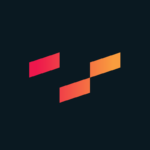Recently, I sat down with Tyler Palesano, InterWorks Software Architect and MOAS Admin Extraordinaire, to talk about his internal management role and what it’s really like doing dev and tech support for a company that also … does dev and tech support! Time for support-ception.
Q: How would you describe your role?
MOAS is our internal system that contains the HR and scheduling tools used by the rest of the company. There has to be some place where all of our employees and their engagements are listed and where paid time off (PTO) can be tracked throughout the organization. My team and I build, maintain and develop that operational system to make logistics move more smoothly and be a centralized repository for company-wide info.
Internal Systems Done Differently
Q: What differentiates MOAS from other companies’ internal management systems?
Our MOAS system is a completely custom build that enables unity in how people work. Our Time Entry (TE) interface is where people log their hours each day, and there’s a unified system for how that’s done. We’re also working on building a new system that integrates with Slack and can bring MOAS and Salesforce together.
Our situation is unique because we have developers in MOAS and Salesforce that are able to work together to pivot, develop and integrate these systems in the future. We’re not trying to improve upon any existing platforms; we’re aiming to enhance them and fill gaps according to our use cases.
Q: When dev happens, what does that look like? Who and what is involved in that process?
When it comes to MOAS, that work is done by a team consisting of Luke Davis, Greg Nelms, Matt Mueggenborg and me. I primarily serve as the project lead and do management work, like code review, to help with stability and efficiency. We have a couple more people who are working with Nicole on Salesforce implementation and integration.
Every month, we roll out large updates to MOAS. My team and I are involved in notifying the company as a whole of what’s changing and fielding the requests that come in periodically and influence those new updates.
Q: You mention fielding requests. What is that process like?
We want everyone in the company to feel confident in requesting changes to MOAS! We’re always looking for ways to streamline and enhance the system, and since people do use it day in and day out, it’s important to us that the experience is easy and smooth for everyone. So when a request comes in, the MOAS team takes a look at how large the request is and how much time we have available to dig into it. Sometimes, people will ask about the creation of a certain feature that already exists; they just need to be directed to it in the system. But I also have monthly meetings with Behfar and Cole to share ideas and get feedback on new implementation. The conversation around changes is always happening.
Every few weeks, the team takes a look at our backlog of requests and assesses our schedule. How much time do we have coming up to dedicate to answering requests? How can we shuffle priorities to address more pressing asks from the team? Once that’s settled, we get into the dev, and every time a new feature is introduced, we always announce it to the company in our MOAS Slack channel.
Q: What are the biggest challenges to doing this kind of internal dev?
Honestly, we really want people to understand that their feedback is wanted. We want to hear from people about the things they’d like to see in MOAS. We don’t want anyone to experience frustration in the system, especially if it’s something we’re unaware of. We want people to let us know what they think, so we can continue to improve the experience. The MOAS team is a resource that they can and should use!
Within the team, there are some unique circumstances that can be a little challenging to navigate. The MOAS site is large and has been passed through lots of hands, so sometimes you get in there and find older language that’s used a little differently, or something has been written in sort of a funky way. Because of this, every person on the team has to a sort of jack of all trades in figuring things out.
A Beautiful Day for Internal Development
Q: What do you love most about doing internal dev?
Behfar gives us a lot of freedom to experiment and iterate. When the team has strong feelings about something, they’re empowered with the autonomy and creativity to dig in and create the thing they want to see. Plus, since this is a system that everyone in the company uses, including us, it’s fun to see the fruits of our labor firsthand and experience the benefit of the new updates we just worked on.
Q: What has been your favorite improvement over time?
I’m really pleased with how we’ve grown to allow for new holidays at InterWorks. As a global company, every region has its own set of holidays, and we need to keep track of them all, so dates and availabilities generate correctly when people are taking PTO or scheduling client engagements. The holidays page is really well designed and user friendly. Users can see the previous and following years’ holidays, and a reminder message about an upcoming holiday can easily be sent to the entire company. This way, everyone can know what to expect about who’s in office and who’s not.
It may seem like a small thing, but the holidays page takes something that would normally be a super tedious, manual process and automates it from a central location. Holidays feed into TE and the TE reminders, which then ripple out into the scheduler. The domino effect starting with the holidays is big, so it’s really nice to have that initial page running smoothly.
Q: Tell me about the TE reminders.
This is a really fun part of the TE and MOAS systems. We send reminders to people when they haven’t put in their expected number of hours, but we like to keep things funny with these nudges, so the reminder image used to be a pretty menacing one featuring Chucky. Then it became less aggressive and used some awesome Mr. Rogers graphics. Now, we have TE help coming from Napoleon Dynamite. It’s cool to be able to use silly things like this to help people accomplish an ordinary task like TE. We also like to hide Easter eggs throughout the TE site just because.

Above: A TE reminder for time that is past due
Q: What is your greatest hope for MOAS? What do you hope it becomes or want it to do really well?
Our goal is to build something on par with Salesforce or other systems of that caliber. We want people to trust the product to do what you need it to do. When you’re in there and you need to work between two distinct groups, like accounting and HR, you know they’re going to work together. We want it to be so intuitive and seamless that you’re not even thinking about using it.
Ultimately, we want to create a comprehensive, experiential product that can work seamlessly with other great platforms like Salesforce. A more enhanced, well-designed UX will produce more trust with our audience. When our audience trusts us more, they’re more likely to provide feedback, and when we get more feedback, we’re better equipped to build the best solution we can. That’s really what it’s all about: creating the best product, so it can serve our users as best as possible.

Above: A friendly reminder for when you need to enter in your day’s time


